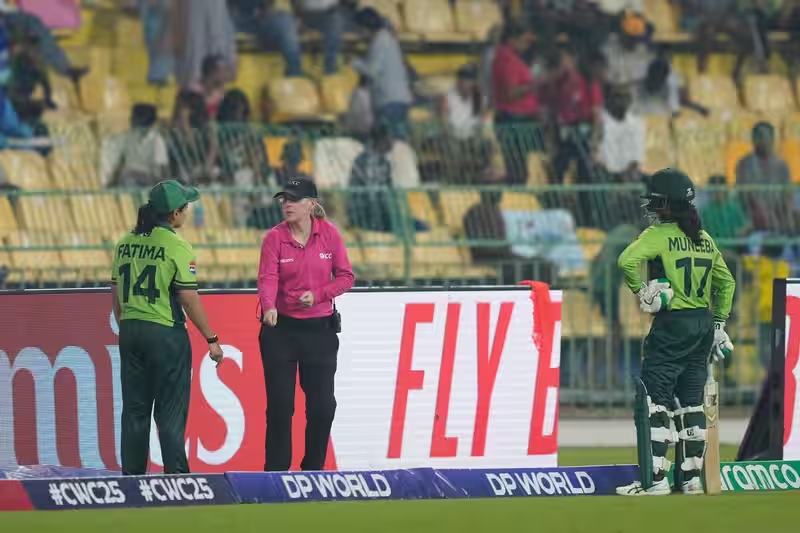Table of Contents
- The Controversial Moment
- What Happened on the Field?
- Umpires in the Spotlight
- Fan and Expert Reactions
- Broader Impact on Women’s Cricket
- Sources
Muneeba Ali Run-Out: A Turning Point Wrapped in Confusion
In one of the most talked-about moments of the recent India vs Pakistan Women’s World Cup clash, Pakistan opener Muneeba Ali was given run out under highly unusual circumstances—sparking outrage, confusion, and a lengthy on-field delay . The incident didn’t just raise eyebrows; it ignited a global conversation about consistency, technology, and decision-making in women’s cricket.
What Happened on the Field?
The drama unfolded on the final ball of the fourth over at Colombo’s R. Premadasa Stadium. After a sharp direct hit from an Indian fielder, Muneeba Ali dived to make her ground. Initial replays suggested she’d beaten the throw—but the real twist came next .
According to broadcast footage, Ali had placed her bat behind the crease line—but crucially, it wasn’t grounded. Neither her foot nor her bat made contact with the ground behind the popping crease at the exact moment the bails were dislodged . Under the laws of cricket, that’s enough for a run-out.
However, the confusion deepened when the third umpire first signaled “not out”—only to reverse the decision moments later after re-examining the footage . To make matters worse, the big screen at the stadium flashed conflicting decisions, leaving players, fans, and even commentators scratching their heads .
Umpires in the Spotlight
Pakistan’s team immediately paused play, seeking clarification from the on-field officials. The delay lasted several minutes as the coaching staff tried to understand how the reversal occurred . This wasn’t just a case of marginal judgment—it was a rare public display of procedural ambiguity in a high-stakes match.
While the third umpire (reportedly Kerrin) eventually stood by the “out” call based on the bat being in the air, the sequence exposed gaps in real-time communication between match officials and broadcasters . For a sport increasingly reliant on technology, such inconsistencies can undermine trust in the system.
Fan and Expert Reactions
Social media erupted instantly. Fans from both nations debated the legality and fairness of the dismissal. Many Pakistani supporters called it a “heartbreaking injustice,” while neutral observers pointed to the letter of the law supporting India’s appeal .
Former players and analysts weighed in too. Some praised the third umpire for sticking to the rules, while others criticized the lack of clarity in how the decision was communicated. “If the system can’t explain its own call in real time, it’s failing the game,” tweeted one ex-international.
Broader Impact on Women’s Cricket
Beyond the headlines, this moment highlighted a bigger issue: the need for standardized review protocols in women’s international cricket. As the women’s game grows in viewership and competitiveness, such high-profile controversies can either fuel engagement—or erode credibility.
For Muneeba Ali, it was a personal setback in a crucial match. For cricket administrators, it’s a wake-up call to ensure that technology serves clarity—not confusion.
Key Takeaways:
- Muneeba Ali was run out because her bat wasn’t grounded behind the crease.
- The third umpire initially gave “not out,” then reversed the call.
- Conflicting signals on the stadium screen added to the chaos.
- The incident sparked global debate on umpiring standards in women’s cricket.
